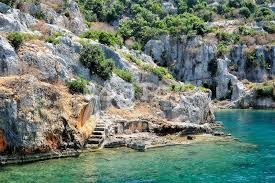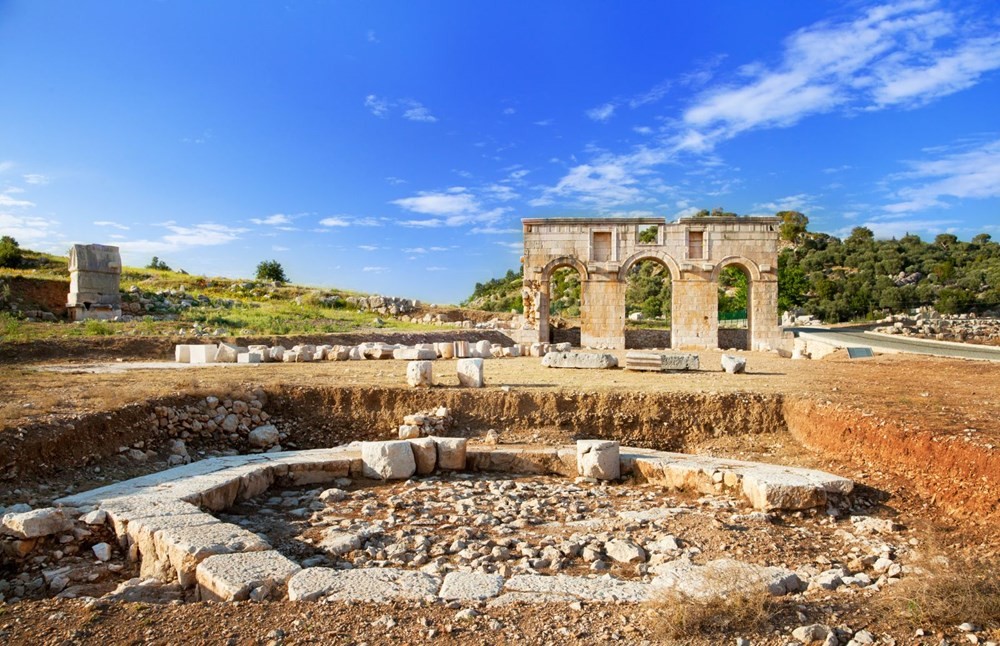Perge, located 19 km east of Antalya, used to be one of the most important cities of ancient Pamphylia. Its most notable son was Apollonius, a mathematician and an astronomer who who gave the ellipse, the parabola, and the hyperbola the names by which we know them. In ancient times, Perge was also renowned as a sanctuary dedicated to the goddess Artemis whose temple stood on a hill outside the town. Unfortunately, despite intensive searching, researchers have so far failed to find any traces of this once magnificent building.
PERGE - ANCIENT CITY
Gallery20 December 2019Legendary beginnings and prehistory
According to Greek mythology the legendary origins of Perge date back to the 13th century BC, when Greek immigrants arrived to Pamphylia, traversing Asia Minor after the Trojan War. The leaders of this movement were supposed to be three famous seers - Mopsos, Calchas and Amphilochus. The first two of them had been recognized as the founders of Perge. The first settlement in Perge area developed on the acropolis hill, to the north of the best-preserved ruins of the later period that are located on the plain below.
The earliest archaeological finds from the area of the acropolis of Perge are dated to the end of the fifth millennium BC. The oldest traces of continuous settlement begin in the third millennium BC and demonstrate that the city existed until the Byzantine era. Based on a clay tablet found in the Hittite capital, Hattusa, some scholars identify Perge with a Hittite city of Parha. During the reign of the Hittite king Tudhaliya IV, i.e. at the end of the 13th century BC, a peace treaty was signed the king Kurunta of Tarhuntassa, who waged war with the city of Parha on the river Kashtraia, identified with Kaistros of antiquity.
Greek and Hellenistic period
In the 4th century BC Perge reappears in written sources, when its existence is reported by a writer known as pseudo-Scylax, the author of Periplus - a quasi-scientific geographical account of a clockwise circumnavigation of the Mediterranean and Black Sea. Pseudo-Scylax describes the city on the river Kaistros (now Aksu), situated 10 km away from the seaside, but profiting from maritime trade. The wealth of the city resulted from the fact that the river Kaistros was navigable in these times. Perge was then connected with the coast by the road leading to the port of Magydus that is now a district of Antalya called Lara.
Until 334 BC, as all other cities of Pamphylia, Perge was in the zone of Persian influence. When the Macedonian army, led by Alexander the Great, reached this region Perge surrendered immediately, opening its gates to the Macedonians. The residents of Perge even offered Alexander their help and services as guides in Pamphylia. Around 300 BC Perge acquired the status of a colony of Pergamon. Then the settlement was expanded and acquired a typically Hellenistic character. In the second century BC the city experienced the first period of prosperity and started minting its own coins with the image of Artemis.
The most famous born in Perge was an outstanding mathematician and astronomer, Apollonius (c. 262 BC – c. 190 BC). He is considered to be one of the greatest Greek mathematicians, on a par with Archimedes. Apollonius belonged to the Alexandrian school of thought and his most important work, preserved only in fragments, was Conics (Κωνικά) in which he came close to developing analytic geometry. He was given a title of the great geometer that he obtained by identifying and giving the names of conic sections i.e. the hyperbola, the parabola, and the ellipse. He also dealt with the problems in the field of astronomy and created the hypothesis of eccentric orbits to explain the apparent motion of the planets and the varying speed of the Moon. The crater Apollonius on the Moon was named in his honor.
Roman and Byzantine rule
In 188 BC Perge came under the Roman rule, and in 129 BC it was formally incorporated into the province of Asia. When a new Roman province, Galatia, covering an area of central Anatolia was created in 25 BC, the Romans decided to connect it to the coast of the Mediterranean Sea. Soon a new road - Via Sebaste - was constructed, linking Pisidian Antioch in Galatia with Perge in Pamphilia.
Christianity reached Perge in the first century Ad and was introduced to its inhabitants by Paul the Apostle. He came to Perge by the sea route, during his first missionary journey (45-48 AD), in the company of Barnabas and John Mark, but soon went on his way, to Pisidian Antioch. On the way back to the coast of St. Paul stayed in Perge for a longer time, preaching and teaching. Most likely it was when the first church in Perge was erected. The journey of Paul the Apostle is now commemorated in the form of a hiking trail that starts in Perge and leads all the way to Pisidian Antioch.
In the first and second centuries AD Perge was one of the greatest cities in Asia Minor, competing with Side for the role of the Pamphylian capital. Most of the best preserved buildings in the city are dated to this period. The person responsible for the development of Perge was Plancia Magna, the wife and sister of Roman senators, born into the family of Cappadocian kings and a relative of Herod the Great. Her statue, found near the Hellenistic Gate in Perge, is now in the Archaeological Museum in Antalya.
The third and last period of city prosperity came in the 5th and the 6th centuries AD, when the city had a rank of a bishopric. Unfortunately, the end of Perge was very close, as in the 8th century it was razed to the ground during the Arab invasions of Asia Minor and has never been rebuilt.
Visitor tips
Perge can be visited daily, from 9am to 7pm in summer months (April-October) and from 8:30am to 5:30pm in winter season. The ticket costs 20 TL.
Many wonderful statues, sarcophagi and other finds from Perge are now in the Archaeological Museum in Antalya, so the visit to this venue is a great addition to the trip.
Getting there
The best idea is to go to Perge from Antalya and visit Aspendos ruins and Kurşunlu waterfall on the same day. If you have a car, you can try to drive to Termessos and Karain cave during the tour. Local travel agencies from Antalya offer the excursions to Perge, Aspendos and Side for 120 TL.
By public transport: from Antalya center take the AntRay tram to its eastern terminus (Meydan). From there it is possible to catch a minibus to Aksu and then walk to Perge or take a taxi. The distance from Aksu to the ruins is just 2 km. Alternatively you can go to Aksu from the coach station by a minibus.
By taxi: a taxi ride from the center of Antalya to Perge, then to Aspendos and back to Antalya costs 160 TL.
By car: Perge is situated on the eastern side of Antalya, very close to D400 route that links Antalya with Side and Alanya. Driving from the direction of Antalya turn off this road approximately 4 km after the airport and go north, following the sign-posts to Perge. The distance to Perge from the center of Antalya is 19 km, from Side - 61 km and from Alanya - 120 km.
This article has been previously published as a part of book Antalya, Side and Alanya: TAN Travel Guide by Izabela Miszczak






